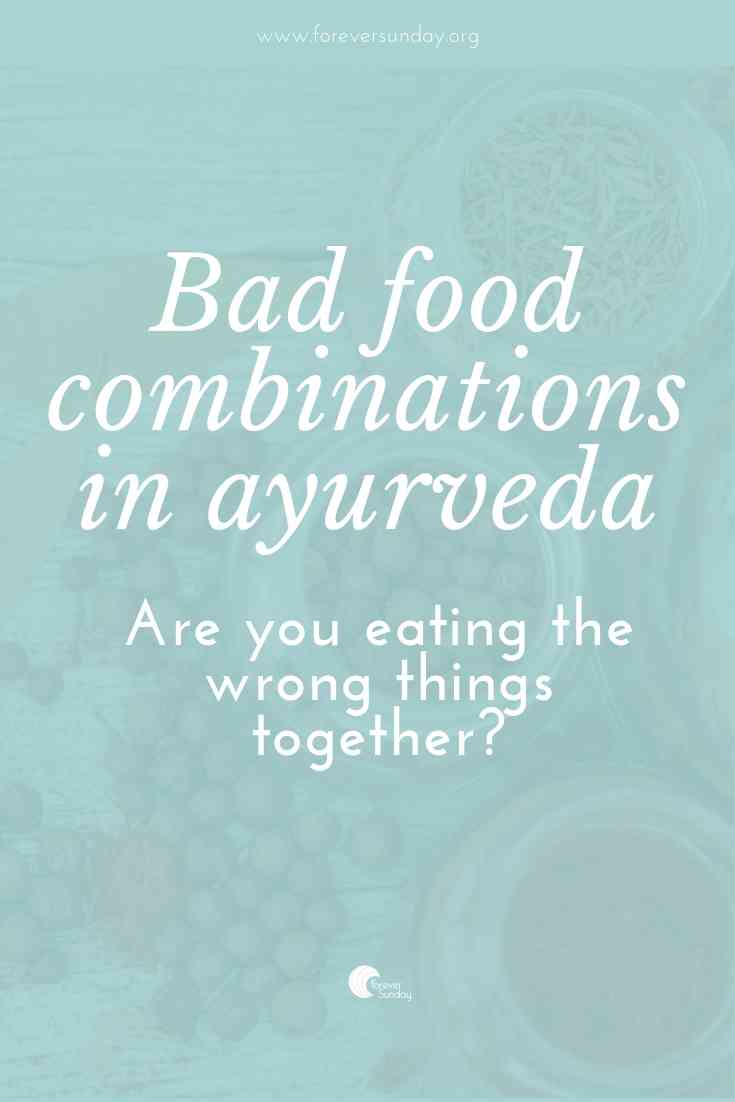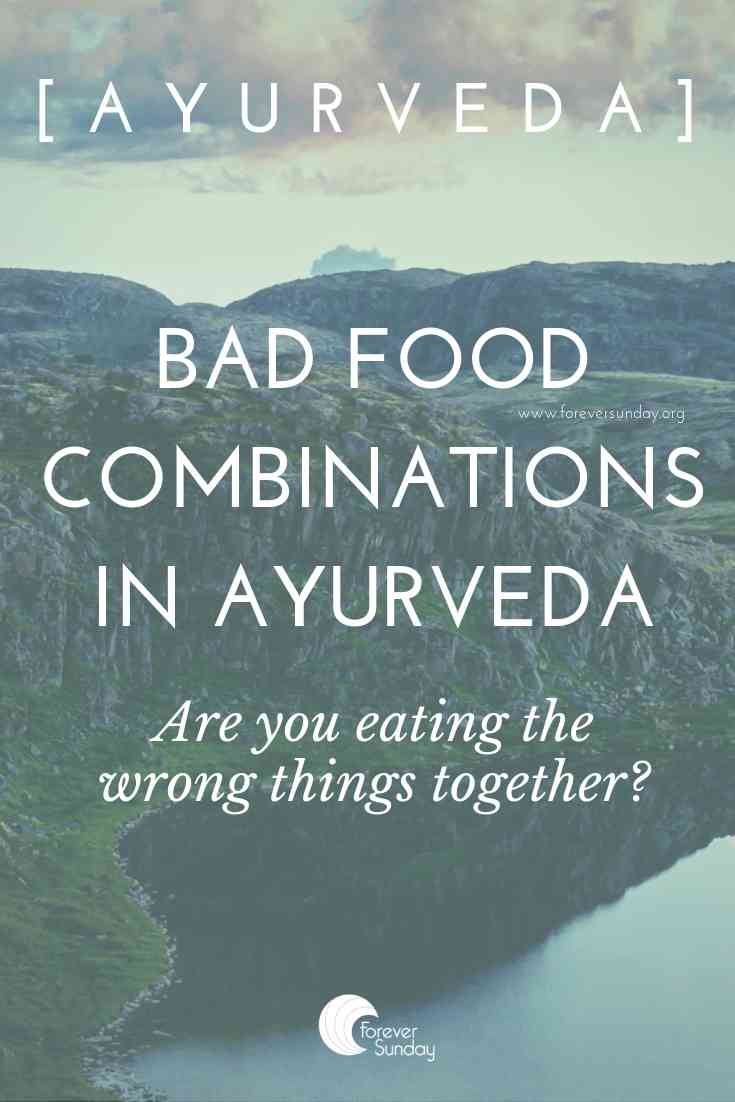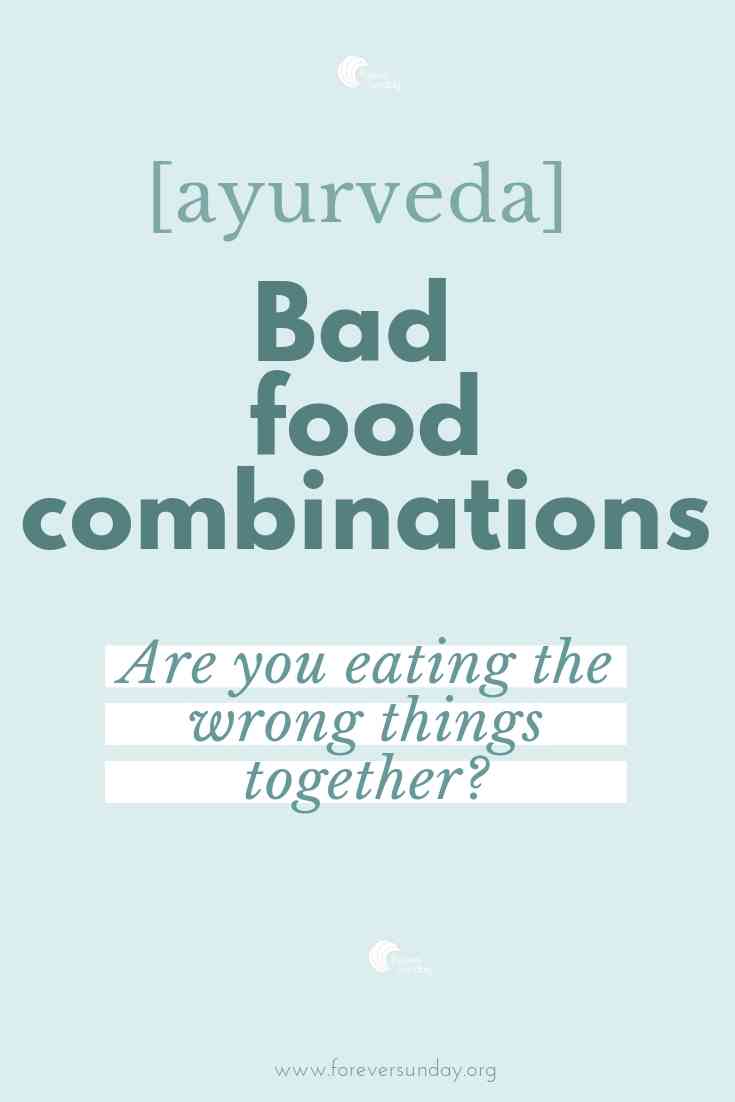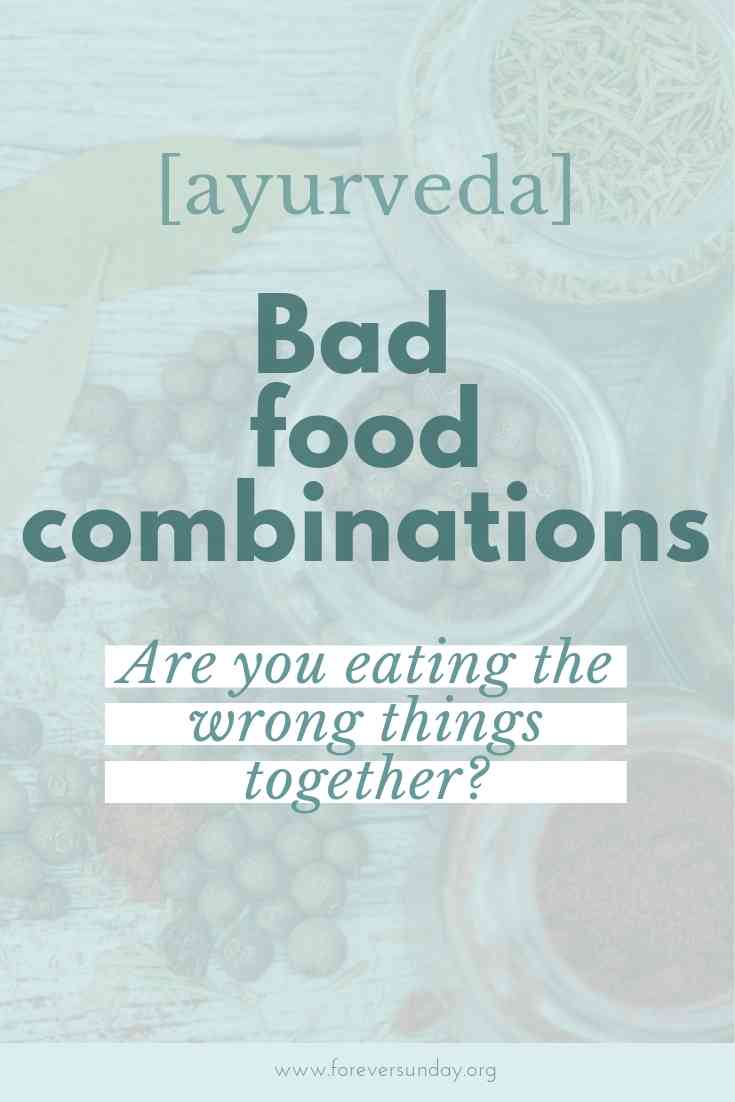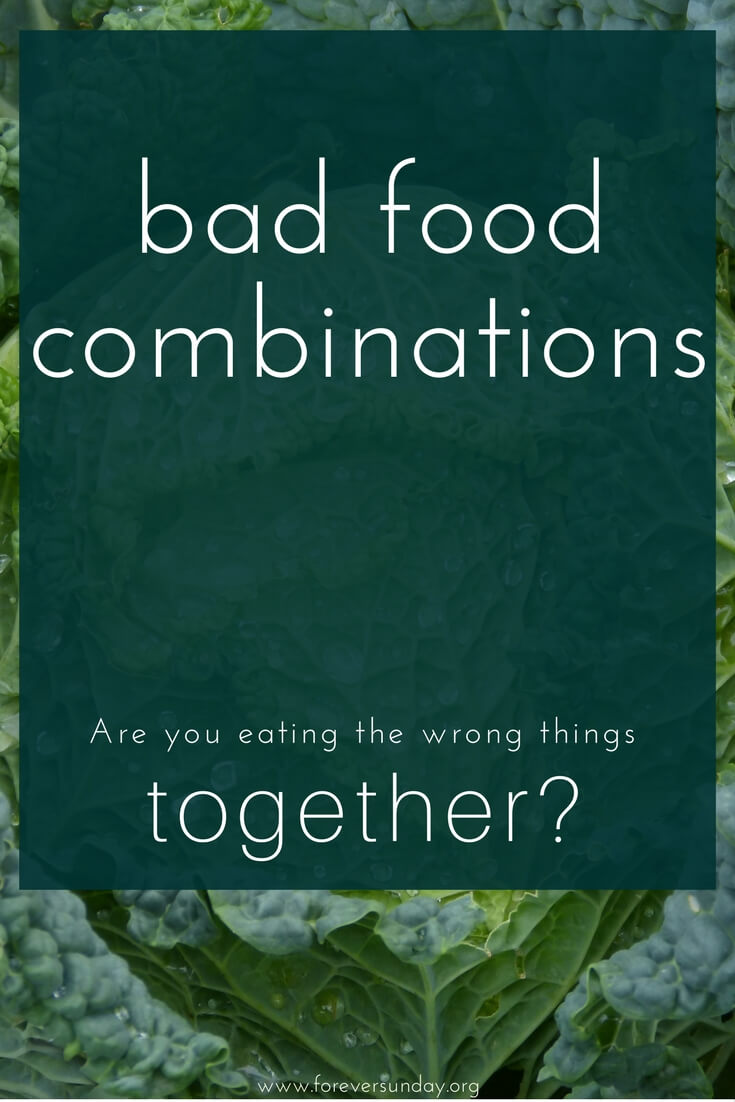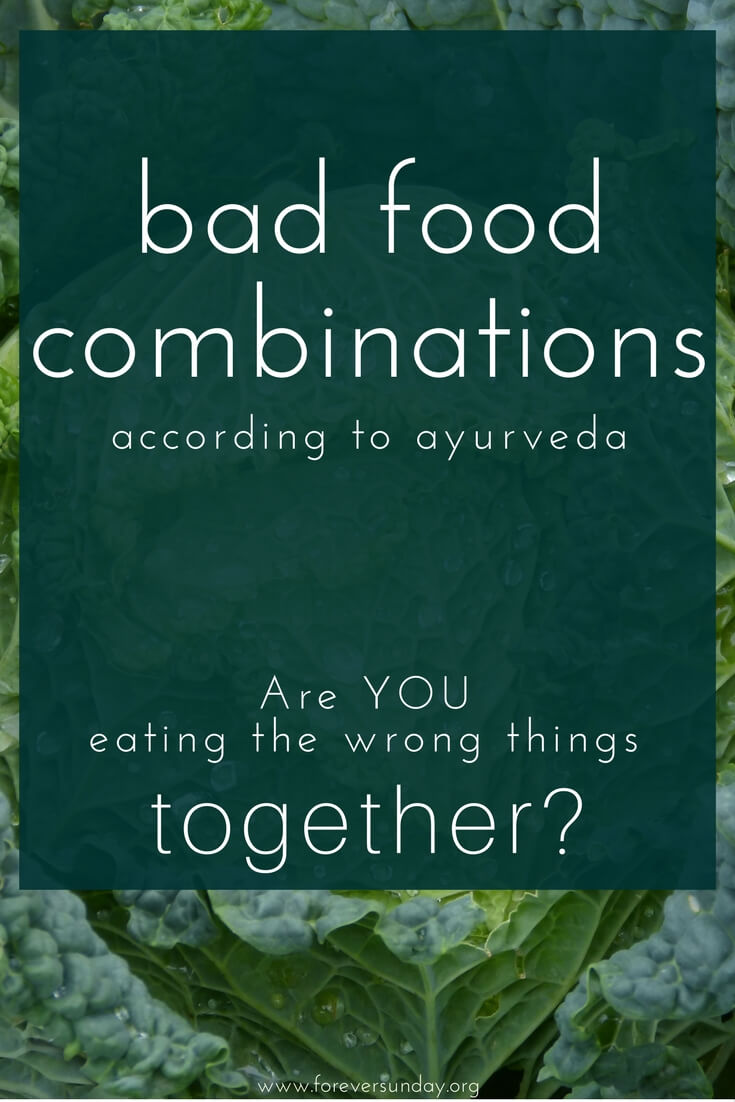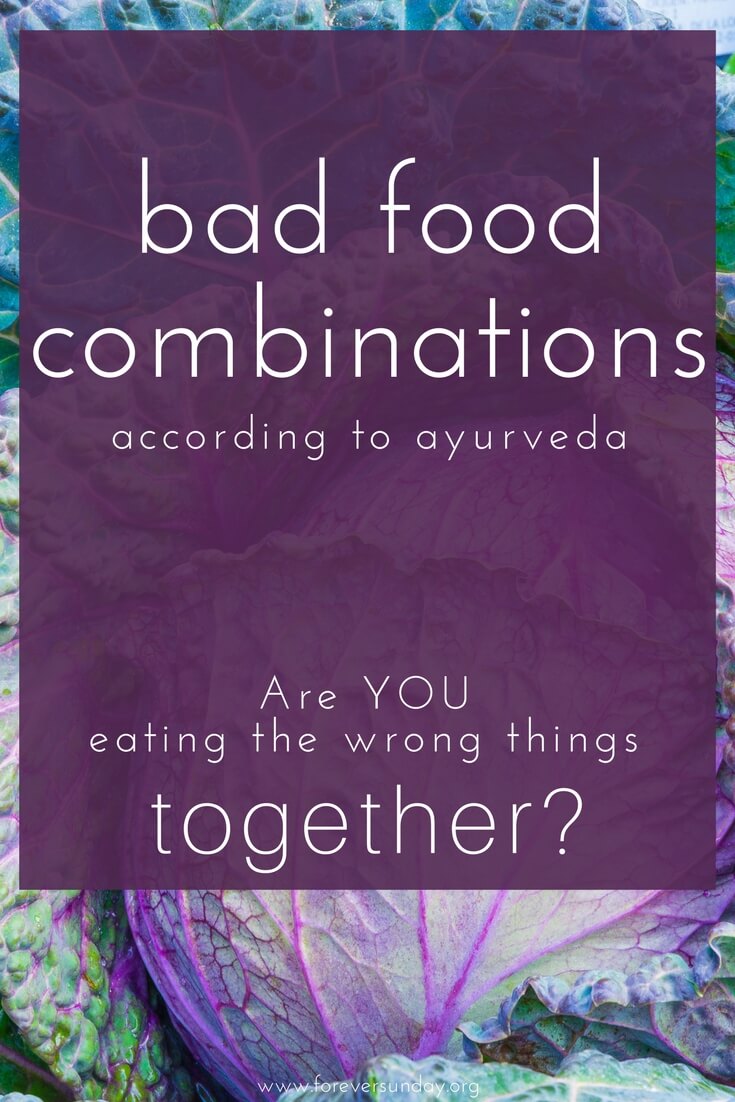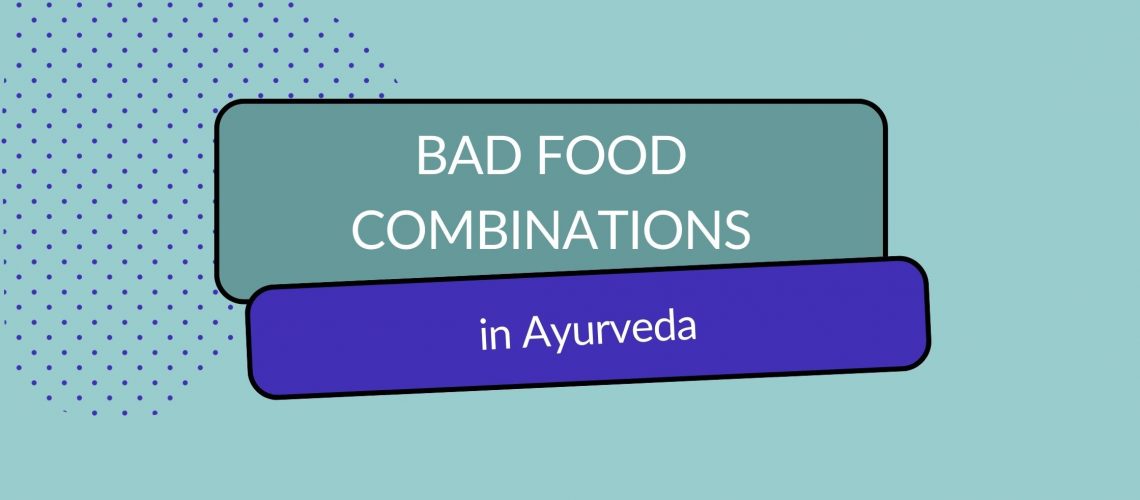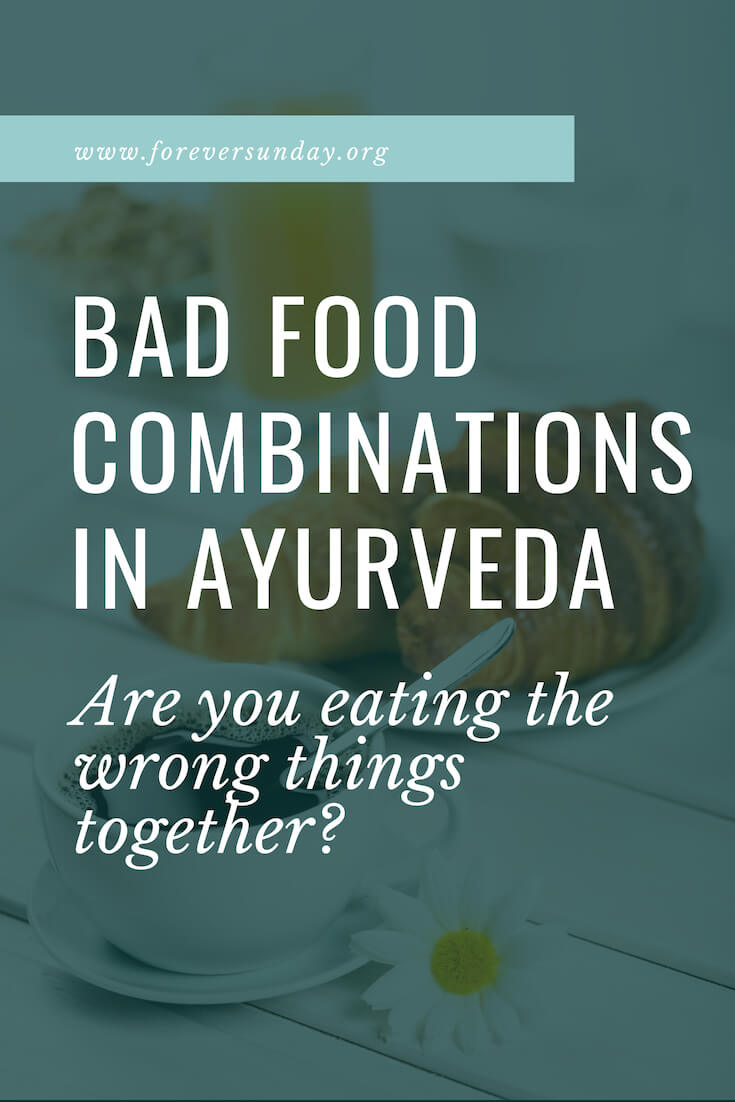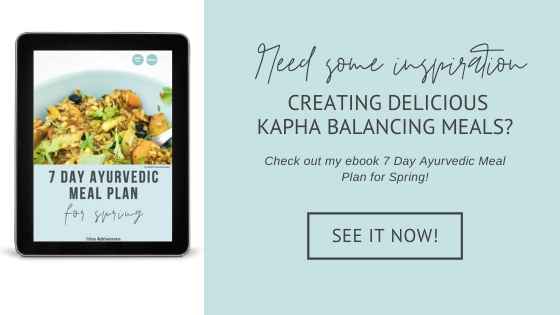Have we been doing it wrong? Food should give us energy. That feeling we sometimes get after lunch when we just want to take a nap? The heaviness in our stomach, or a bad aftertaste. Acid reflux. You might have been eating wrong food combinations… Are you guilty of eating these unhealthy food combinations?
Bad food combinations affect your digestion and can cause indigestion, fermentation, gas and putrefaction. When our digestion is affected, the digestion will produce more toxins (ama) in your body. Over time, with prolonged exposure to improperly digested foods and ama, disease will start to take hold in your body.
With some of these food combinations it may make sense why they are bad, and you might even have some previous memorable experience with them… Others are so generally accepted and applied it is hard to believe that they are bad for us.
In this post we’re exploring the ayurvedic recommendations for food combinations, some things we all do wrong (those fond of their cheese toasties hold tight) and some solutions to common food combination mistakes.
Related: What is ayurveda?
Bad food combinations
Here we go. For good health and digestion, ayurveda recommends not to combine the following foods.
Dairy and animal foods (especially fish)
Fish and a butter or cream sauce is a big no-no. This would also mean a combination of eggs and milk, but also bolognese sauce with cheese, goat’s cheese and bacon salad,… I can hear you sigh, oh yes I can hear you. Next time you eat any of these, try and become really aware of the effects after you’ve eaten. Maybe next time choose one or the other.
Dairy and salt or salted foods
Cheese would be in this category… But surely it’s no surprise that cheese is bad. It’s so good! It appeals to us because of its high fat + salt content, but really, that’s all it is. Try to eat it on its own so it doesn’t interact badly with other foods. Btw, if rennet is used in the production of your cheese (I will let you google that) it is not vegetarian.
Dairy and fruits
Don’t worry, those fruit yoghurts from the supermarket don’t have any actual fruit in them (but avoid them anyway for being highly processed and unhealthy). Strawberries and cream? Nope. Milk or cream based fruit ice cream… are you crying yet?
Banana and milk is the worst combination but you can use a plant based milk for your smoothie, especially if you are adding other fruits.
Fruits and any other foods
Fruit after a meal is not a good idea. It causes the other foods in your G-I tract to ferment (= gas producing). The worst combo, and many peoples’ favourite breakfast: cereal with fruit and yoghurt. Eat your fruits or juice first and wait a while (at least 2 hours) before you eat your cereal. This way you get to have 2 breakfasts. Awesome.
Hot and cold foods together
Mixing hot and cold foods like a hot dish and then ice cream as dessert, or yoghurt and a cup of coffee for breakfast. Also do not drink ice cold water during your meal as it will extinguish the digestive fire (agni). While the sensation of hot + cold in your mouth may be pleasant, your stomach will probably not agree.
Honey
And last, but not least, honey. Yes, I love you too but I wanted to talk about honey. Honey should not be heated. Never ever. So honey in tea = bad news. Something to do with the wax in the honey that melts and transforms into a toxin. We only need one teaspoon of sugar/honey a day anyway, so for sure you don’t need it in your tea.
Next I’ll explain why these foods are incompatible, and I’ll give you some examples.
Why are there bad food combinations?
In ayurveda every food is classified according to its energies. These are the qualities to describe each food:
- taste (rasa)
- heating or cooling effect (virya)
- effect after digestion (vipaka)
- special properties (prabhava)
There are three stages in the digestion of food. The first is taste, or rasa. The second stage is virya, or the heating or cooling effect. The third stage is after digestion, or vipaka.
Taste (rasa)
We are very familiar with the taste, or rasa, of food. As we put food into our mouth, it mixes with saliva and we perceive its tastes on our tongue. Ayurveda recognises 6 tastes: sweet, salty, sour, pungent, bitter and astringent. Most foods have one dominant taste, although every food has a little bit of the 5 other tastes as well, in differing quantities. If something is said to be sweet, that doesn’t mean it can not also be bitter, but as a less strong taste. When we talk about rasa, we talk about the dominant taste of a food.
Heating or cooling effect (virya)
Each taste has an associated energy, and the effect of a food in the body can be cooling or heating. Pungent, sour and salty foods have a heating potency, and sweet, bitter and astringent foods have a cooling potency. This effect is not the difference between warm and cold food – some foods eaten cold or raw have heating properties. It is the response of the body upon ingestion of the food.
Some heating foods are: peppers, radish, onions, mushrooms, garlic, eggplant, watercress
Some cooling foods are: broccoli, cucumber, potatoes, spinach
(for an exhaustive list consult an ayurvedic encyclopedia like this one that I have).
The effect after digestion (vipaka)
When a food goes through the G-I tract, it is subject to many processes. These metabolic processes may change the effect of the taste of a food; the aftertaste will be different. In the end, three tastes remain: sweet, pungent and sour.
Special properties (prabhava)
Some foods have an effect that is unexpected, that can’t be described according to its other properties. They are exceptions to the rule. For instance, a food or herb that is heating in nature, but when ingested lowers fever, is basil. Other foods classified as prabhava are: bananas, lemon, honey and onions. They all have special qualities.
When we look at foods in this way we can start to understand why certain combinations are bad for us. Opposing qualities cause the digestive fire (agni) to distinguish. Foods are improperly digested, stay too long in the intestines and disturb the fragile balance.
Our bodies also become accustomed at repeated bad food combinations so we might not sense discomfort anymore at eating a bad food combo. A lot of waste and toxins are produced during the digestive process and the effect will only come over time (you know it will…).
Examples of bad food combinations
Let’s look at some examples.
Meat is heating (and essentially inflammatory) in nature, and dairy cooling. You would think that they balance each other, but they use different digestion processes, so they are not compatible. Meat especially causes putrefaction in your intestines (eat a few days vegetarian and smell the difference in the little room).
Salt is hot in nature, so mixed with dairy to make cheese combines two energies (virya) in one food. And then when you combine cheese with beans, or with pasta, you are just adding up more incompatible foods.
Bananas and milk. A dream food combo. Bananas and milk are both sweet in taste (rasa), but there’s a problem in the energies (virya) and the aftertaste (vipaka). Milk is cooling, bananas are heating. Bananas and milk are both sweet in taste, but they have a different aftertaste: banana becomes sour while milk remains sweet.
Everybody is affected differently by bad food combos
Some people have strong digestion (agni) by nature, others don’t, so some combinations will not harm a person as much as the other. Not instantly, anyway. Even making one change at a time might make a big difference. By combining our food properly we are helping our digestion, our body will be better nourished and in the long term we see the difference in our skin, our body and our mind.
Now comment below and tell me:
What are the bad food combinations you want to give up? :) And which ones do you find hard to give up?
